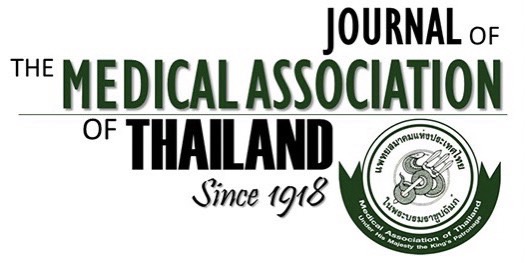Mucosal-type Eosinophilic Gastroenteritis in Thailand: 12-Year Retrospective Study
Wuttiporn Manatsathit MD*, Radsamee Sermsathanasawadi MD**, Ananya Pongpaiboon MD***, Supot Pongprasobchai MD**
Affiliation : * Siriraj Hospital, Mahidol University, Bangkok, Thailand; Department of Internal Medicine, Saint John Hospital and Medical Center, Detroit MI 48236, Michigan, USA ** Division of Gastroenterology, Department of Internal Medicine, Siriraj Hospital, Mahidol University, Bangkok, Thailand *** Department of Pathology, Siriraj Hospital, Mahidol University, Bangkok, Thailand
Objective : To evaluate the clinical features and natural course of disease among patients with mucosal-type eosinophilic
gastroenteritis in Thailand.
Material and Method: The present study was conducted by retrospectively searching for the ICD-10 code for eosinophilic
gastroenteritis (EGE) among medical records for the period 2001-2012. Clinical and pathological specimens were reviewed
using the same diagnostic criteria. Appropriate tests were conducted to exclude other secondary causes of EGE. All patients
had to have either received empirical treatment for parasitic infections or were tested for parasites in the stool. After the
diagnosis had been established, each patient received 30-40 mg/day of oral prednisolone for four weeks, which was tapered
down as clinical status improved. All patients were followed up by monitoring clinical symptoms and relevant laboratory
findings. Patients who did not maintain follow-up appointments were contacted by telephone and asked about their clinical
symptoms.
Results : Seventeen patients with a diagnosis of mucosal-type EGE (6 male, 11 female, M:F ratio 1:1.83) were found. Mean
age at the time of presentation was 52.5+13.04 years. Four patients (23.5%) had either allergic or atopic conditions. Chronic
diarrhea and weight loss were the most common initial presentation in 16 patients (94.1%). Microscopically and macroscopically,
bloody diarrhea was observed in 13 cases (76.5%). Four patients were found to have protein-losing enteropathy. Peripheral
eosinophilia was found in 10 patients (58.8%) with absolute eosinophil counts between 744 and 23,550 cells/mm3. Eight of
these had an absolute eosinophil count in the hypereosinophilic range (> 1,500 cells/mm3). All patients treated with prednisolone
treatment showed symptomatic improvement within four weeks. One patient’s symptom resolved spontaneously, without
treatment. Thirteen patients relapsed during the tapering-off of prednisolone. Seven patients showed complete remission.
Three patients subsequently developed cancer (lung, breast, and bladder) after EGE was diagnosed.
Conclusion : EGE, although uncommon, is present in Thailand, where parasitic infections continue to be a significant public-
health problem.
Keywords : Eosinophilic, Eosinophilia, Gastroenteritis, Enterocolitis, Diarrhea



